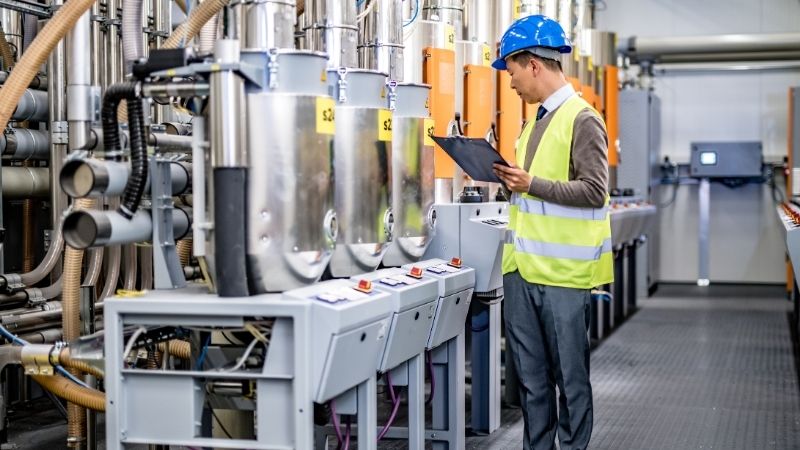Imagine you’re responsible for maintaining a sprawling industrial plant. Traditionally, you might schedule inspections at fixed intervals—annually, biannually—regardless of the actual condition of the equipment. This method, while systematic, can be inefficient and costly. You might end up inspecting equipment that’s in perfect working order while missing early signs of failure in others.

Shift Towards Risk-Based Inspection (RBI)
This is where Risk-Based Inspection (RBI) comes in. RBI represents a significant shift from these traditional methods. Instead of a one-size-fits-all schedule, RBI prioritizes inspections based on the risk each piece of equipment poses. It’s like having a personal health check-up tailored to your unique risk factors rather than a generic annual physical.
RBI assesses both the probability of failure (POF) and the consequence of failure (COF) to decide which assets need immediate attention, making resource allocation much more effective.
Importance of RBI in Managing Risk of Failure

Imagine the peace of mind knowing that your most critical equipment is being monitored closely, reducing the chances of unexpected failures. RBI is essential in this regard. By focusing on high-risk assets, it helps prevent catastrophic failures that could lead to significant financial losses, environmental damage, or safety hazards.
It’s about being proactive rather than reactive, ensuring that resources are directed where they’re needed most.
Objective of Risk-Based Inspection
Transition from Reactive to Proactive Maintenance
The overarching goal of RBI is to transition from a reactive approach—fixing problems only after they occur—to a proactive one. This means identifying and addressing potential issues before they lead to failure. It’s like maintaining your car regularly to prevent breakdowns rather than waiting for it to fail on the highway.
Components of RBI
Probability of Failure (POF)
POF is about understanding how likely it is that an asset will fail within a given period. This involves analyzing various factors such as the asset’s age, operating conditions, and historical performance data. Think of it as predicting the likelihood of a storm based on weather patterns.
Consequence of Failure (COF)
COF evaluates the potential impact if an asset fails. This includes assessing safety risks, environmental damage, and financial implications. It’s like understanding the potential damage a storm could cause if it hits a populated area versus an uninhabited one.
How Does Risk-Based Inspection Work
Data Collection Methods
Effective RBI relies on thorough data collection. Imagine gathering pieces of a puzzle to get a complete picture of your asset’s health. There are three main methods:
Qualitative
Qualitative data collection involves subjective assessments based on expert judgment and experience. It’s like asking seasoned sailors about the likelihood of a storm based on the color of the sky and the feel of the wind.
Quantitative
Quantitative data collection uses objective measurements and statistical analysis. This method provides precise and reliable data, akin to using a barometer and anemometer to measure atmospheric pressure and wind speed.
Semi-Quantitative
Semi-quantitative data collection combines elements of both qualitative and quantitative methods. It’s like using a numerical scale to rate the likelihood of a storm based on both objective measurements and expert opinions.
Risk Analysis Process
Calculation of Risk: POF x COF
The risk associated with each asset is calculated by multiplying its POF by its COF. This gives a risk score, helping prioritize inspection and maintenance efforts. Assets with higher risk scores get more immediate attention, much like how you’d prepare more rigorously for a Category 5 hurricane than a tropical storm.
Benefits of Risk-Based Inspection
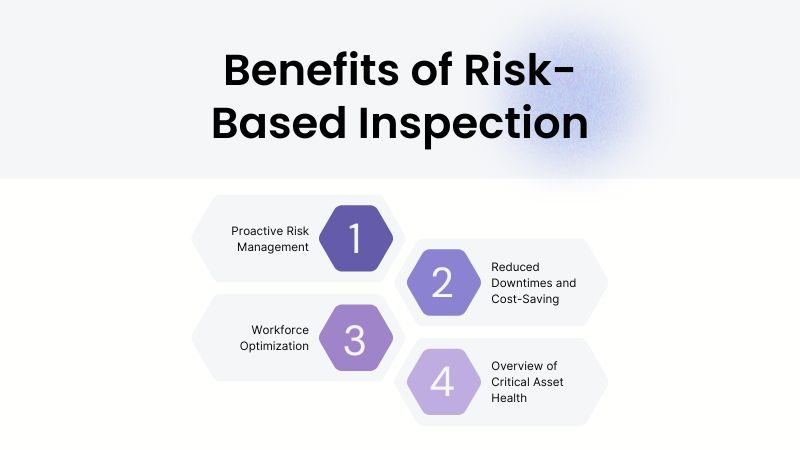
Proactive Risk Management
RBI enables proactive risk management by identifying potential issues early. This approach enhances safety, reduces downtime, and improves overall asset reliability. It’s like having a storm warning system that allows you to prepare in advance, minimizing damage.
Reduced Downtimes and Cost-Saving
By focusing on high-risk assets, RBI minimizes unnecessary inspections and maintenance activities. This reduces downtime and associated costs, leading to significant savings. Imagine the efficiency of only servicing your car when it’s needed, rather than sticking to a rigid schedule.
Workforce Optimization
RBI helps optimize your workforce by directing skilled personnel to high-risk assets. This ensures that expertise is used where it’s needed most, improving efficiency. It’s akin to deploying your best storm chasers to track the most dangerous storms.
Overview of Critical Asset Health
RBI provides a comprehensive overview of the health of critical assets, enabling better decision-making and more effective risk management. This holistic view helps identify trends, anticipate potential issues, and implement timely interventions. It’s like having a detailed weather map that helps you understand and prepare for upcoming storms.
Challenges of Risk-Based Inspection
Commitment from Management and Staff
Implementing RBI requires commitment from both management and staff. This includes investing in training, resources, and technology. It’s like getting everyone on board with a new emergency preparedness plan—it takes effort and buy-in from everyone to ensure its success.
Defining Processes and Implementing Findings
Defining clear processes and effectively implementing RBI findings can be challenging. Organizations must establish robust methodologies and ensure that findings are acted upon promptly and effectively. This is similar to setting up and following a detailed evacuation plan during a natural disaster; it has to be precise and everyone needs to know their role.
Change Management and Staff Training
Transitioning to RBI involves significant change management and staff training. Organizations must ensure that employees understand the new processes and are adequately trained to implement them. Think of it as training a team of first responders; everyone needs to be well-prepared and knowledgeable to handle emergencies efficiently.
Documentation and Methodologies
Introduction of RBI Methodology by Organizations
Several organizations have developed standard methodologies for implementing RBI. These include:
American Petroleum Institute (API)
The API has developed a comprehensive set of guidelines for implementing RBI, known as API 580 and API 581. These documents provide detailed methodologies for assessing the risk of equipment failure and prioritizing inspection efforts.
Think of them as the handbooks for navigating through the complexities of RBI, much like a seasoned sailor’s guide to surviving at sea.
International Organization for Standardization (ISO)
The ISO standards, such as ISO 31000 for risk management, provide additional frameworks that can complement RBI methodologies. These standards help organizations integrate risk management practices into their overall management systems.
It’s like having an international guidebook that provides best practices for managing risks in various scenarios.
Implementing Risk-Based Inspection: Steps and Best Practices
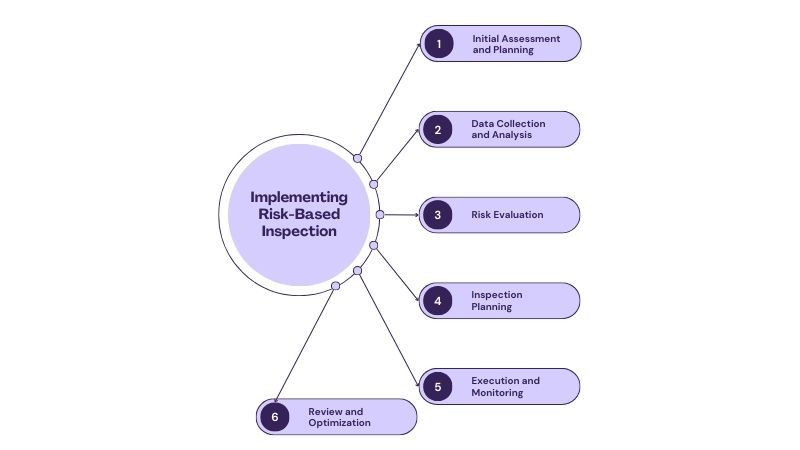
Step-by-Step Guide to Implementing RBI
Transitioning to Risk-Based Inspection can feel daunting, but breaking it down into clear, manageable steps can make the process smoother. Here’s a step-by-step guide to help you get started:
Initial Assessment and Planning
Define Objectives: What do you hope to achieve with RBI? Reduced downtime? Enhanced safety?
Assemble a Team: Bring together a multidisciplinary team, including engineers, inspectors, and risk analysts.
Scope Definition: Identify the assets and systems that will be covered by the RBI program.
Data Collection and Analysis
Gather Data: Collect historical data on equipment performance, failure rates, maintenance records, and operating conditions.
Perform Assessments: Use qualitative, quantitative, and semi-quantitative methods to assess the probability and consequence of failure for each asset.
Risk Evaluation
Calculate Risk Scores: Combine the probability of failure (POF) and consequence of failure (COF) to determine risk scores.
Prioritize Assets: Rank assets based on their risk scores to prioritize inspection and maintenance activities.
Inspection Planning
Develop Inspection Plans: Create tailored inspection plans for high-priority assets, specifying inspection methods, frequencies, and required resources.
Resource Allocation: Allocate necessary resources, including personnel and equipment, to carry out the inspection plans.
Execution and Monitoring
Conduct Inspections: Perform inspections according to the developed plans, using appropriate techniques and technologies.
Monitor Results: Continuously monitor inspection results and update risk assessments as new data becomes available.
Review and Optimization
Analyze Outcomes: Review inspection findings and determine if adjustments to the RBI program are needed.
Continuous Improvement: Implement a feedback loop to continually refine and improve the RBI process.
Best Practices for Successful RBI Implementation
To ensure the success of your RBI program, consider these best practices:
Stakeholder Engagement: Involve all relevant stakeholders early in the process to gain their buy-in and support.
Training and Education: Invest in comprehensive training programs to ensure that all team members understand RBI principles and methodologies.
Accurate Data Collection: Ensure that data collection processes are thorough and accurate, as reliable data is the foundation of effective RBI.
Regular Reviews: Schedule regular reviews of the RBI program to assess its effectiveness and make necessary adjustments.
Use of Technology: Leverage advanced technologies like predictive analytics, digital twins, and IoT sensors to enhance data collection and analysis.
Real-Life Examples of RBI in Action
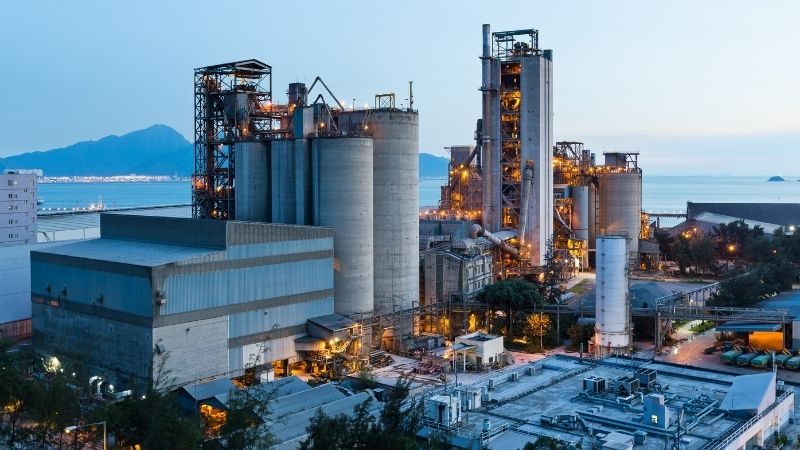
Case Study 1: Oil and Gas Industry
In the oil and gas industry, RBI has been instrumental in preventing catastrophic failures. For example, a large refinery implemented an RBI program to prioritize inspections of its critical pressure vessels. By focusing resources on high-risk equipment, the refinery was able to detect and mitigate potential issues before they led to failures, resulting in significant cost savings and enhanced safety.
Case Study 2: Power Generation Sector
A power generation company adopted RBI to manage the maintenance of its aging infrastructure. By analyzing the risk profiles of its various assets, the company identified key areas where inspections and preventive maintenance were most needed. This proactive approach not only extended the lifespan of critical components but also improved overall reliability and reduced unplanned outages.
Conclusion: The Future of Risk-Based Inspection
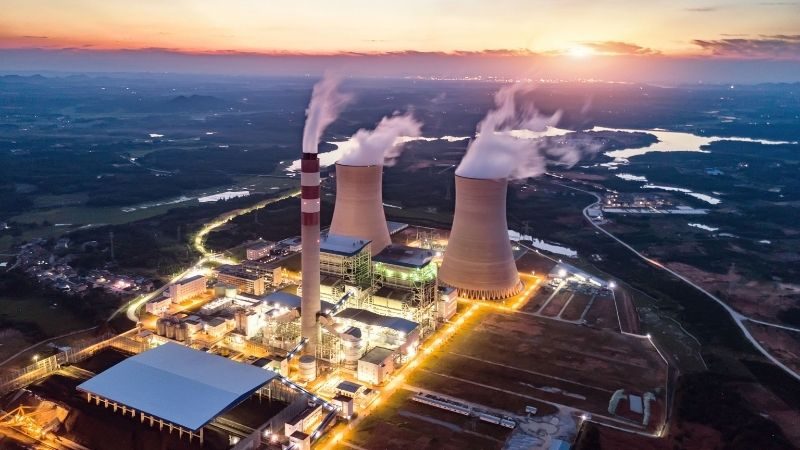
Risk-Based Inspection is more than just a maintenance strategy; it’s a comprehensive approach to asset management that prioritizes safety, efficiency, and reliability.
As industries continue to evolve, the adoption of RBI will become increasingly important for maintaining competitive advantage and ensuring operational excellence.
FAQs on Risk-Based Inspection (RBI)
Explanation of RBI Objectives in Maintenance and Risk Management
The main objective of Risk-Based Inspection (RBI) is to optimize inspection and maintenance resources by focusing efforts on the equipment and areas that pose the highest risk of failure. This approach prioritizes safety, reliability, and cost-effectiveness by assessing both the probability and consequences of equipment failure. By doing so, RBI aims to prevent catastrophic failures, reduce downtime, and improve overall operational efficiency.
Detailed Process of Data Collection and Risk Analysis in RBI
RBI works through a systematic process of data collection and risk analysis. Here’s how it typically unfolds:
Data Collection: Gather historical data on equipment performance, failure rates, operating conditions, and maintenance records.
Risk Assessment: Use qualitative, quantitative, or semi-quantitative methods to evaluate the probability of failure (POF) and the consequence of failure (COF) for each asset.
Risk Evaluation: Combine POF and COF to determine risk scores for each asset.
Prioritization: Rank assets based on their risk scores to prioritize inspection and maintenance activities.
Inspection Planning: Develop detailed inspection plans for high-risk assets, specifying methods, frequencies, and resources required.
Execution: Conduct inspections according to the plans, using appropriate techniques and technologies.
Monitoring and Review: Continuously monitor inspection results and update risk assessments as new data becomes available.
Key Advantages Including Cost Savings and Enhanced Safety
RBI offers several significant benefits:
Cost Savings: By focusing on high-risk areas, RBI minimizes unnecessary inspections and maintenance, thereby reducing costs.
Enhanced Safety: Prioritizing inspections based on risk helps prevent catastrophic failures, improving overall safety.
Improved Reliability: Proactive identification and mitigation of potential issues enhance the reliability of critical assets.
Resource Optimization: Efficient allocation of inspection and maintenance resources based on risk assessment.
Regulatory Compliance: Helps ensure compliance with industry regulations and standards.
Common Obstacles in Implementing RBI and How to Overcome Them
Implementing RBI can present several challenges:
Data Quality: Accurate risk assessment depends on high-quality, comprehensive data. Organizations must invest in robust data collection and management systems.
Change Management: Transitioning to RBI requires significant changes in processes and culture. Effective change management strategies and stakeholder engagement are crucial.
Training: Adequate training is necessary to ensure that staff understand and can effectively implement RBI methodologies.
Initial Costs: While RBI can save money in the long run, the initial costs of implementation can be high. Organizations should view this as an investment in future savings and safety.
Overview of Important Standards and Guidelines
Key documentation and methodologies include:
API 580 and API 581: Developed by the American Petroleum Institute, these provide comprehensive guidelines for implementing RBI.
ISO 31000: Provides a framework for risk management that can complement RBI methodologies.
Company-specific Standards: Many organizations develop their own standards and guidelines tailored to their specific needs and regulatory requirements.
Comparison of RBI and CBM Approaches
Risk-Based Inspection (RBI): Focuses on assessing and prioritizing risks associated with equipment failure, considering both the probability and consequences of failure.
Condition-Based Maintenance (CBM): Relies on real-time monitoring of equipment conditions to determine when maintenance is needed, typically based on performance data and predictive analytics.
While both approaches aim to optimize maintenance activities and improve reliability, RBI is more strategic, focusing on risk assessments, whereas CBM is more tactical, focusing on the current condition of equipment.
Sectors Where RBI is Most Effectively Applied
RBI is particularly beneficial in industries where equipment failure can have severe consequences, including:
Oil and Gas: To prevent catastrophic failures in refineries and pipelines.
Power Generation: To ensure the reliability of critical infrastructure.
Chemical Processing: To manage the risks of hazardous materials.
Manufacturing: To optimize maintenance and reduce downtime in production lines.
Pharmaceuticals: To ensure the integrity and safety of production processes.
Overview of RBI Software Benefits and Examples
RBI software solutions can significantly enhance the effectiveness of RBI programs by:
Automating Data Collection and Analysis: Streamlining the process of gathering and analyzing data.
Risk Visualization: Providing visual tools to help prioritize and manage risks effectively.
Integration with Other Systems: Integrating with existing maintenance and asset management systems for a comprehensive approach.
Predictive Analytics: Leveraging advanced analytics to predict potential failures and improve risk assessments.
Examples of RBI Software Solutions
Meridium APM (by GE Digital): Offers a comprehensive suite for asset performance management, integrating RBI with other maintenance strategies.
Bentley AssetWise: Provides tools for risk-based inspection planning and execution, along with asset reliability and integrity management.
DNV GL Synergi Plant: Focuses on risk-based inspection and integrity management, particularly for the oil and gas industry.
SAP Predictive Maintenance and Service: Integrates RBI with broader asset management and predictive maintenance functionalities.

